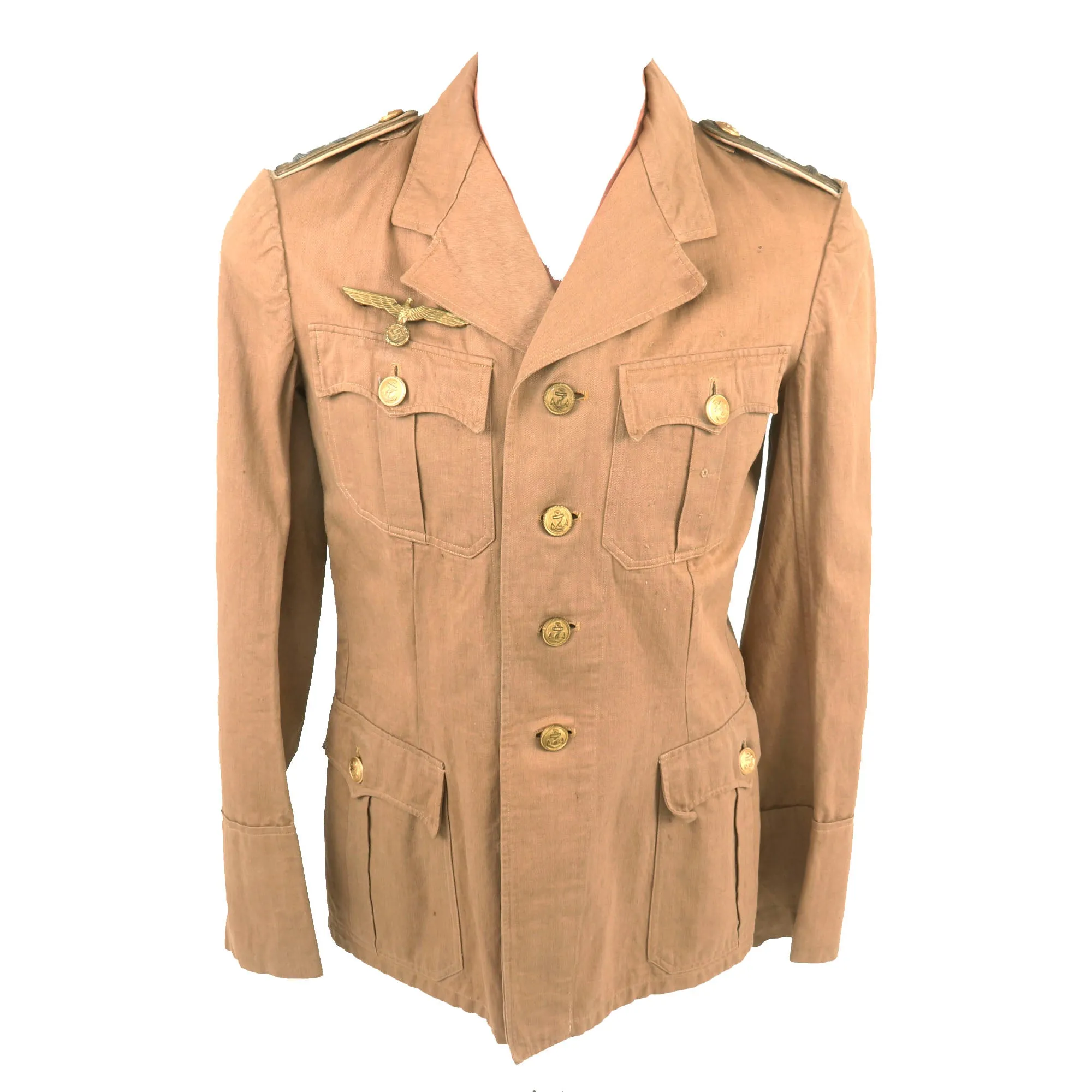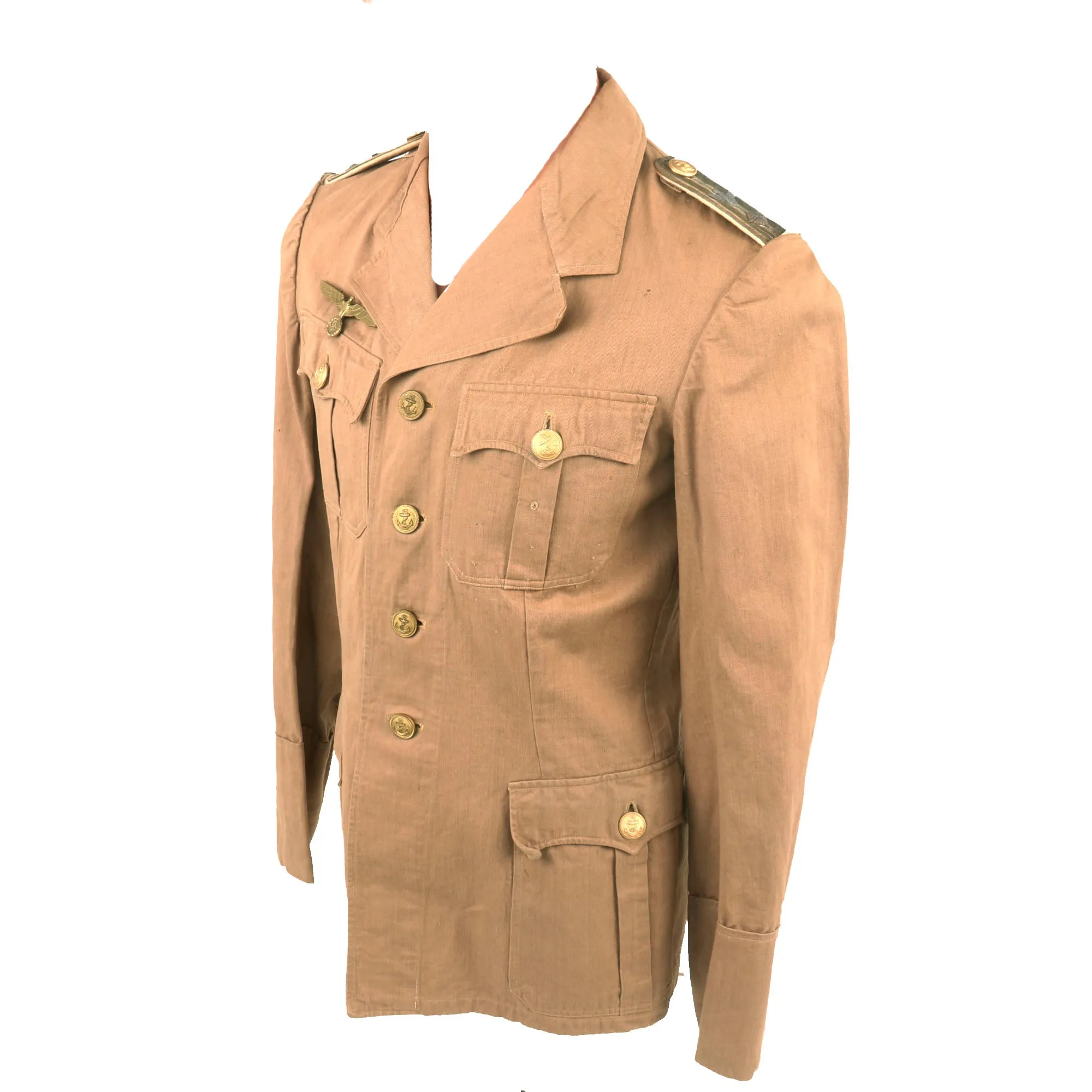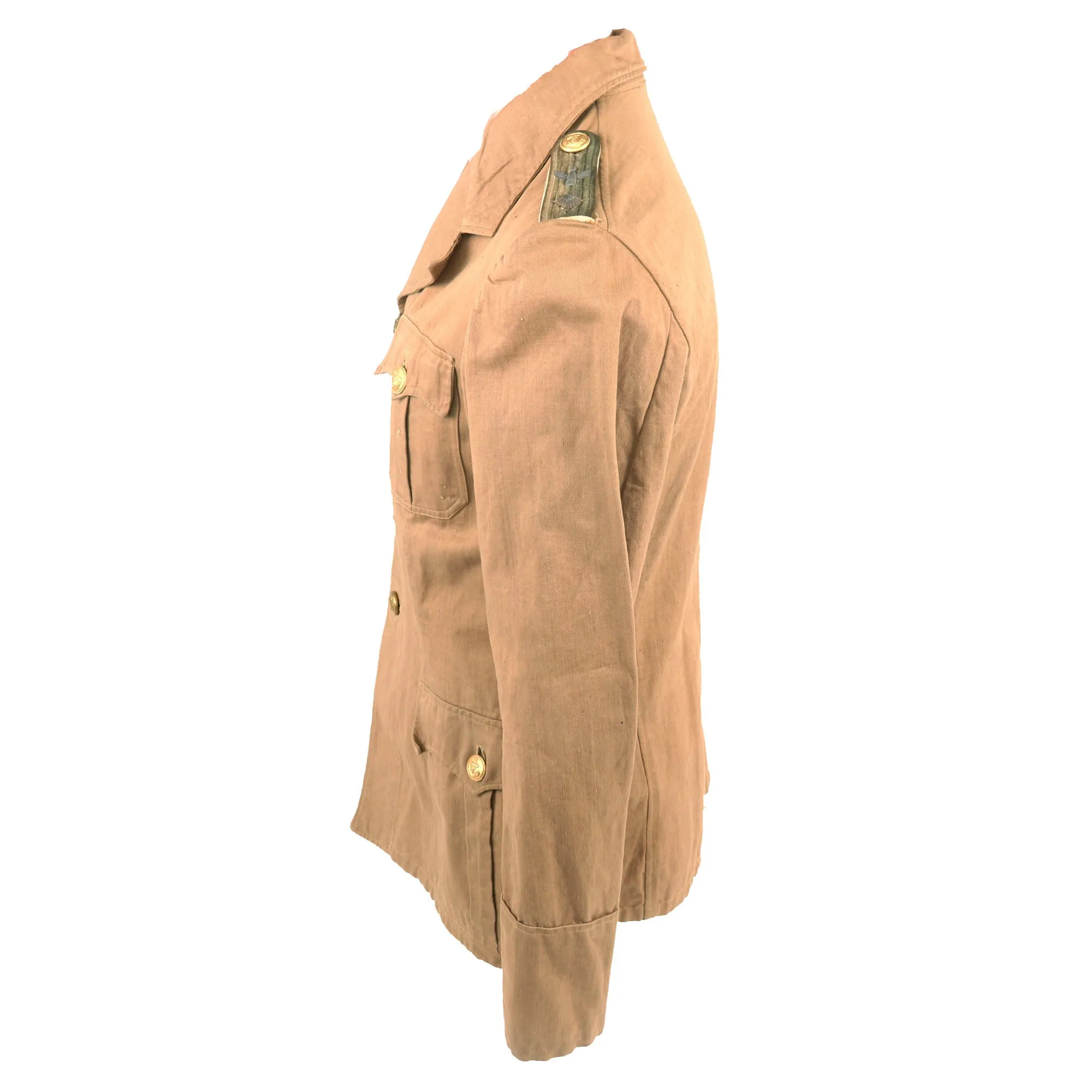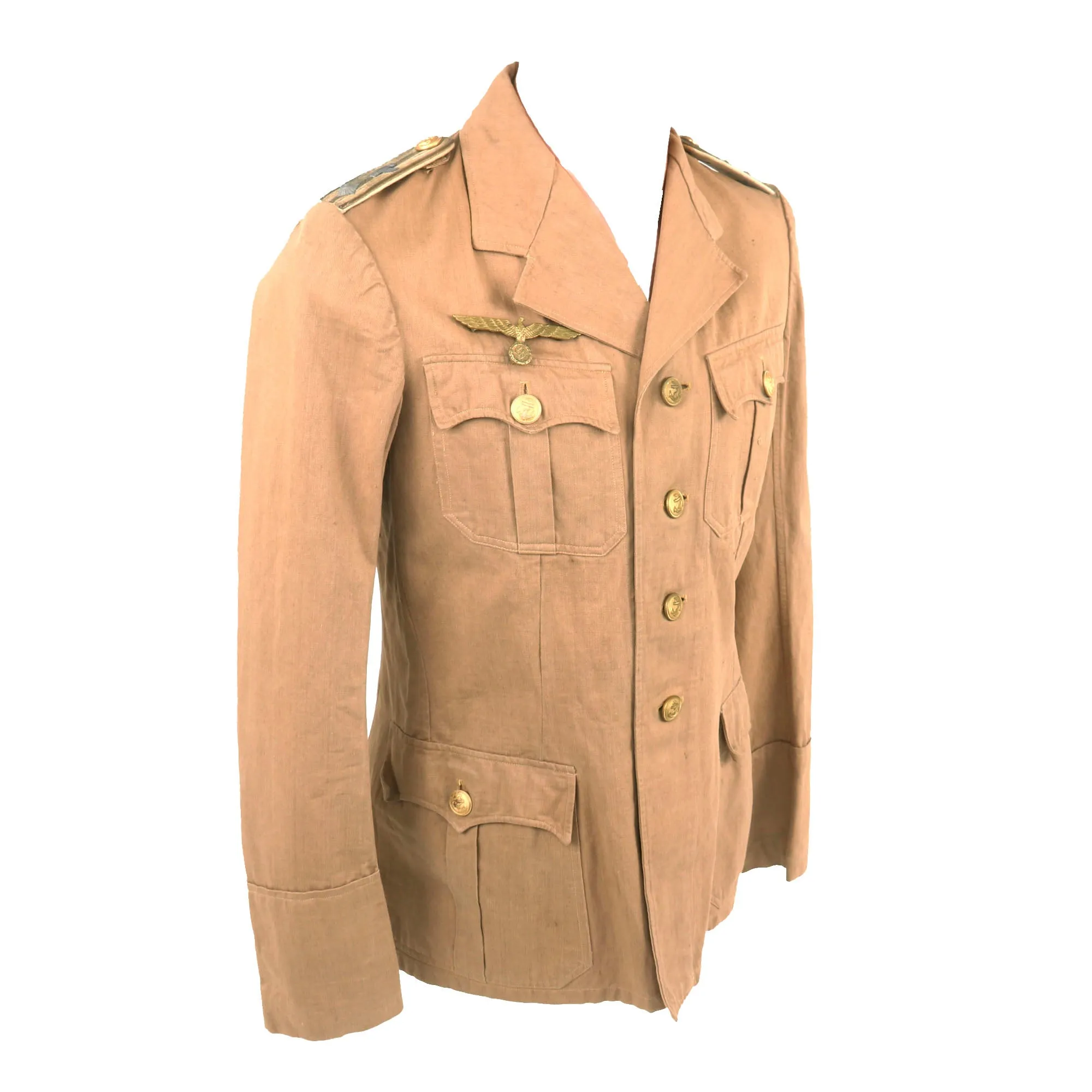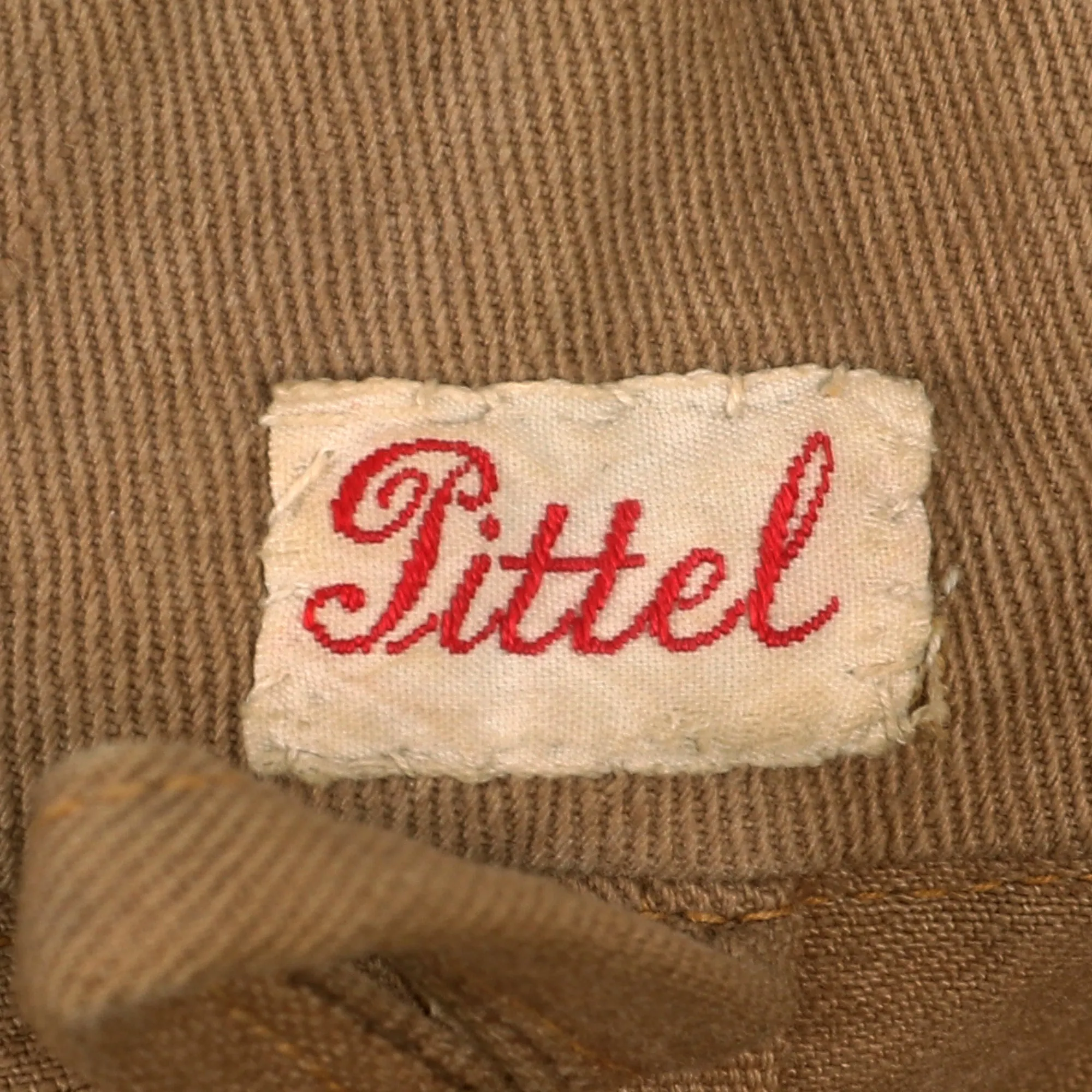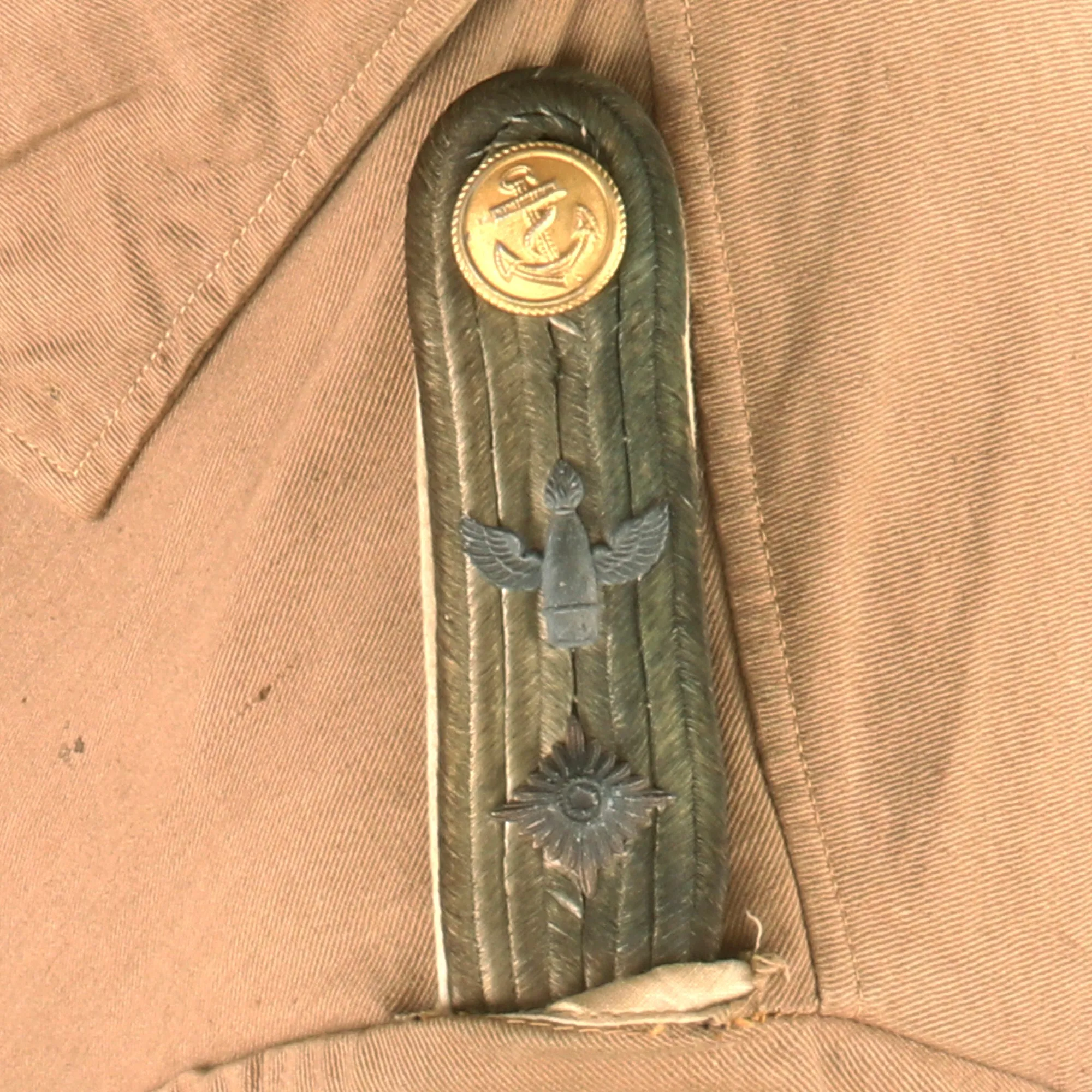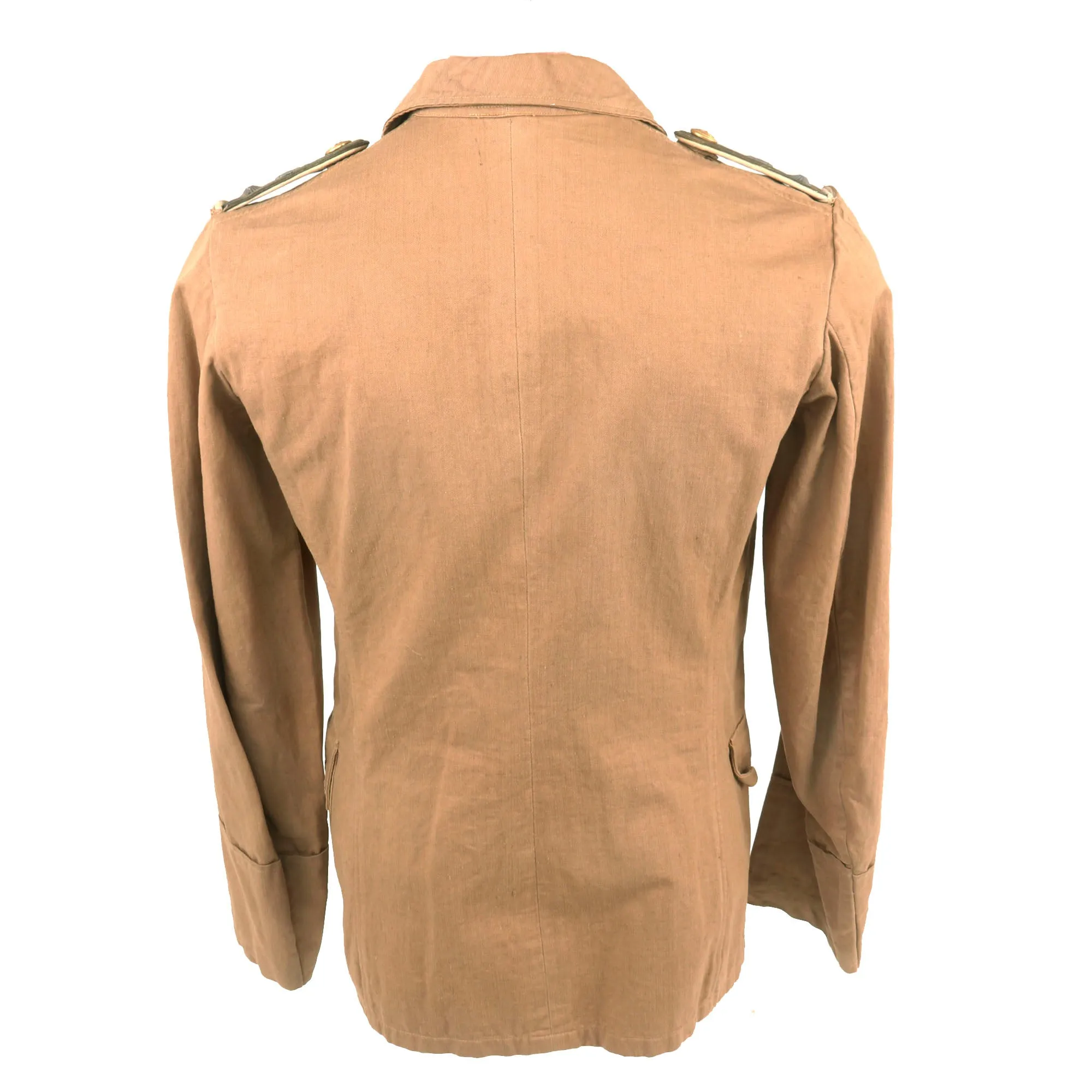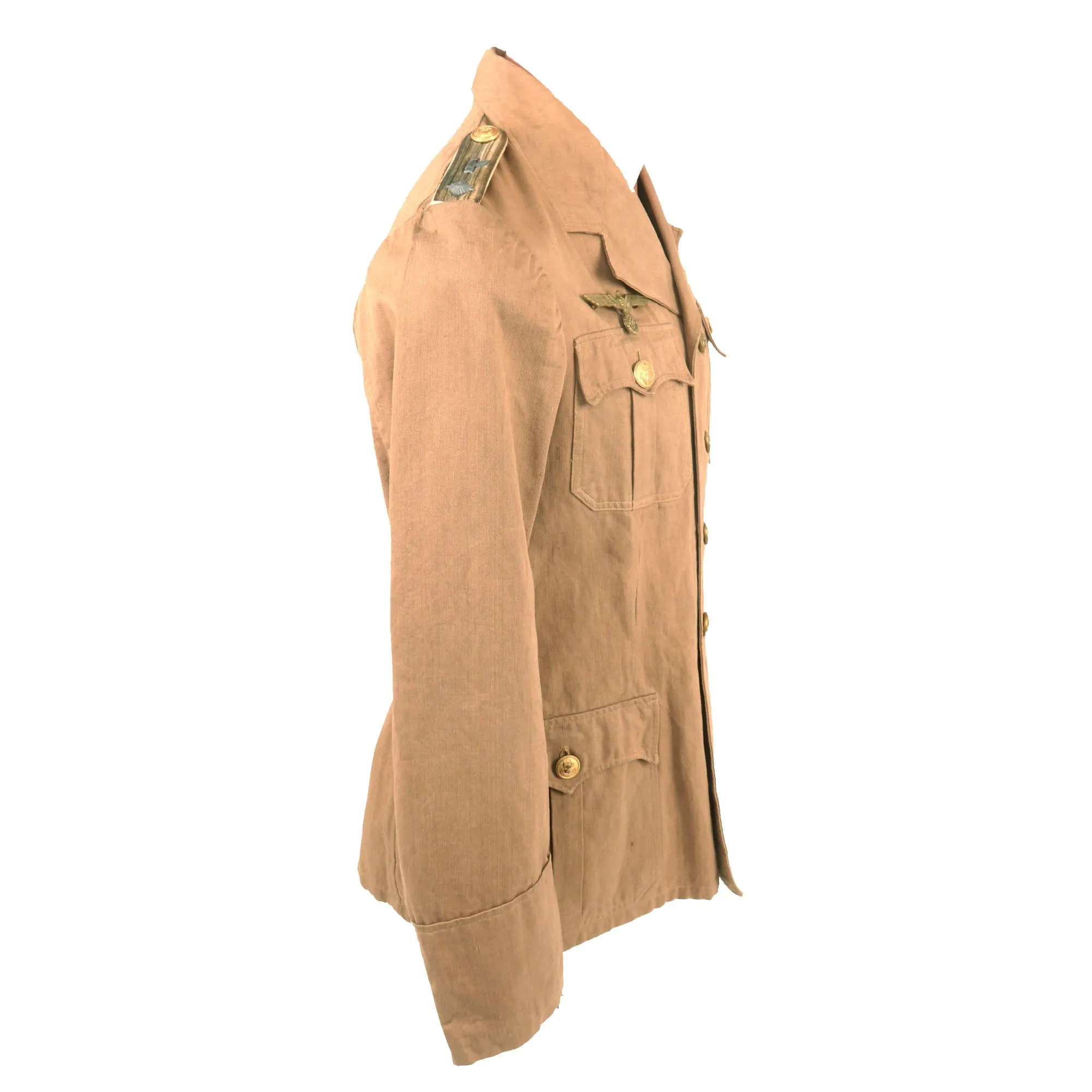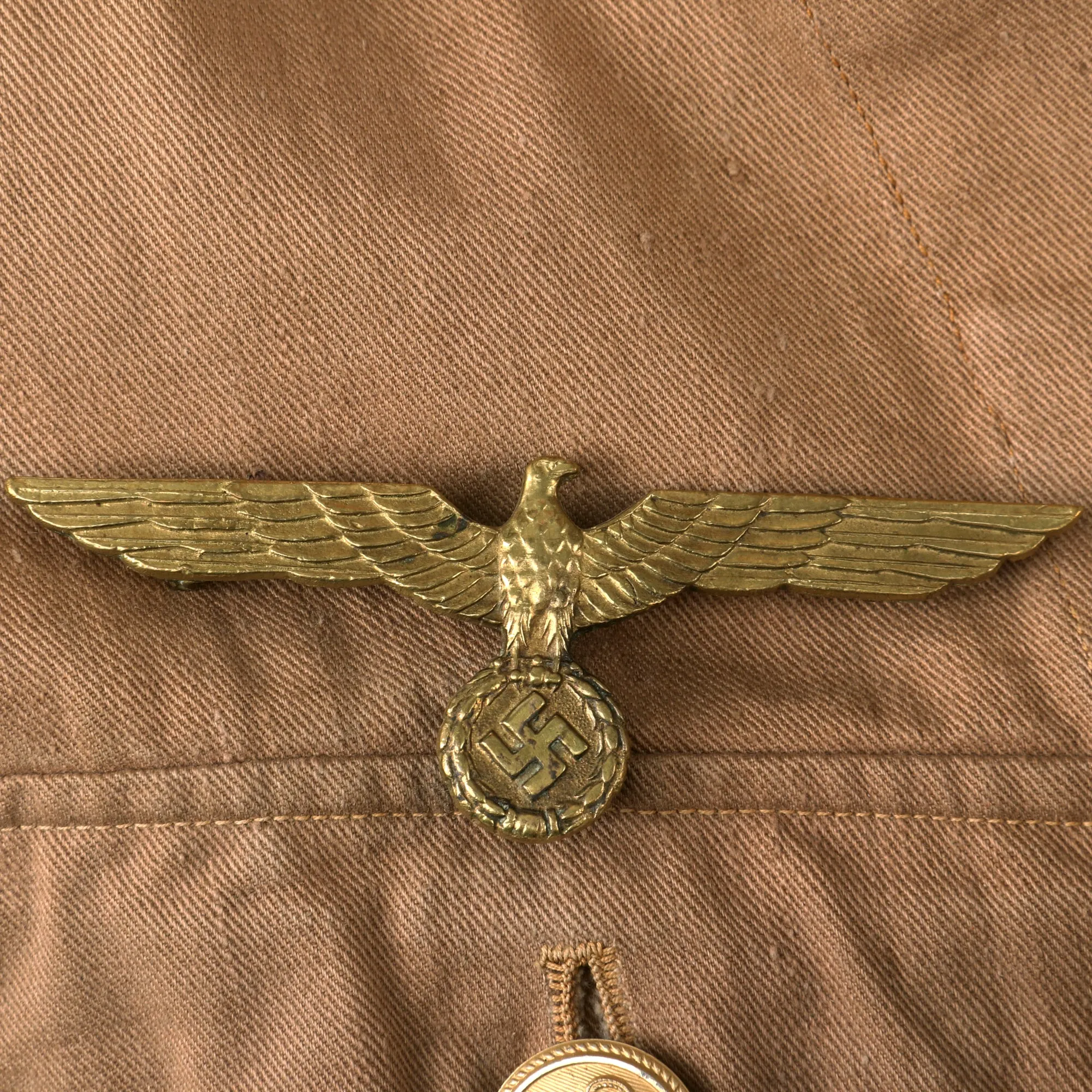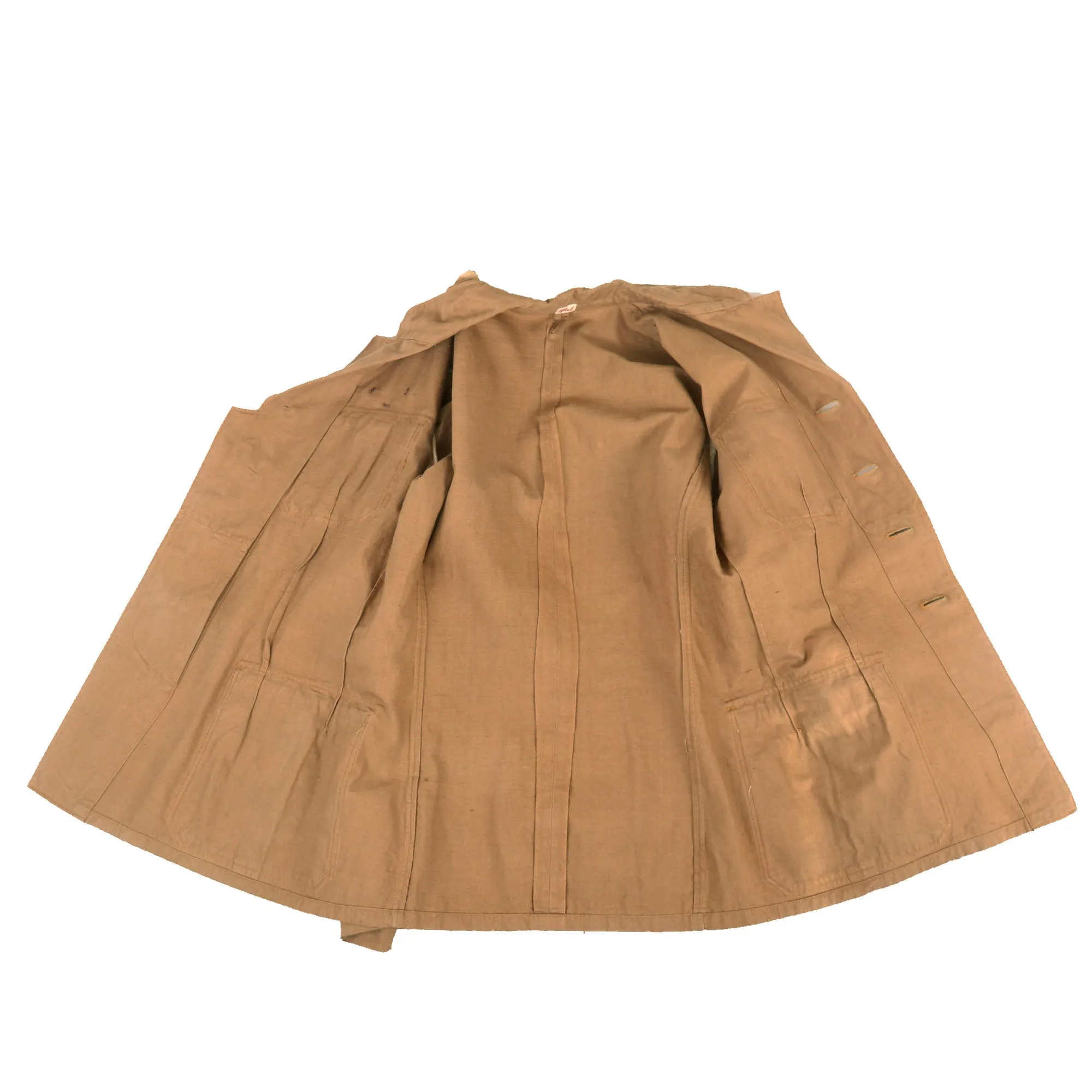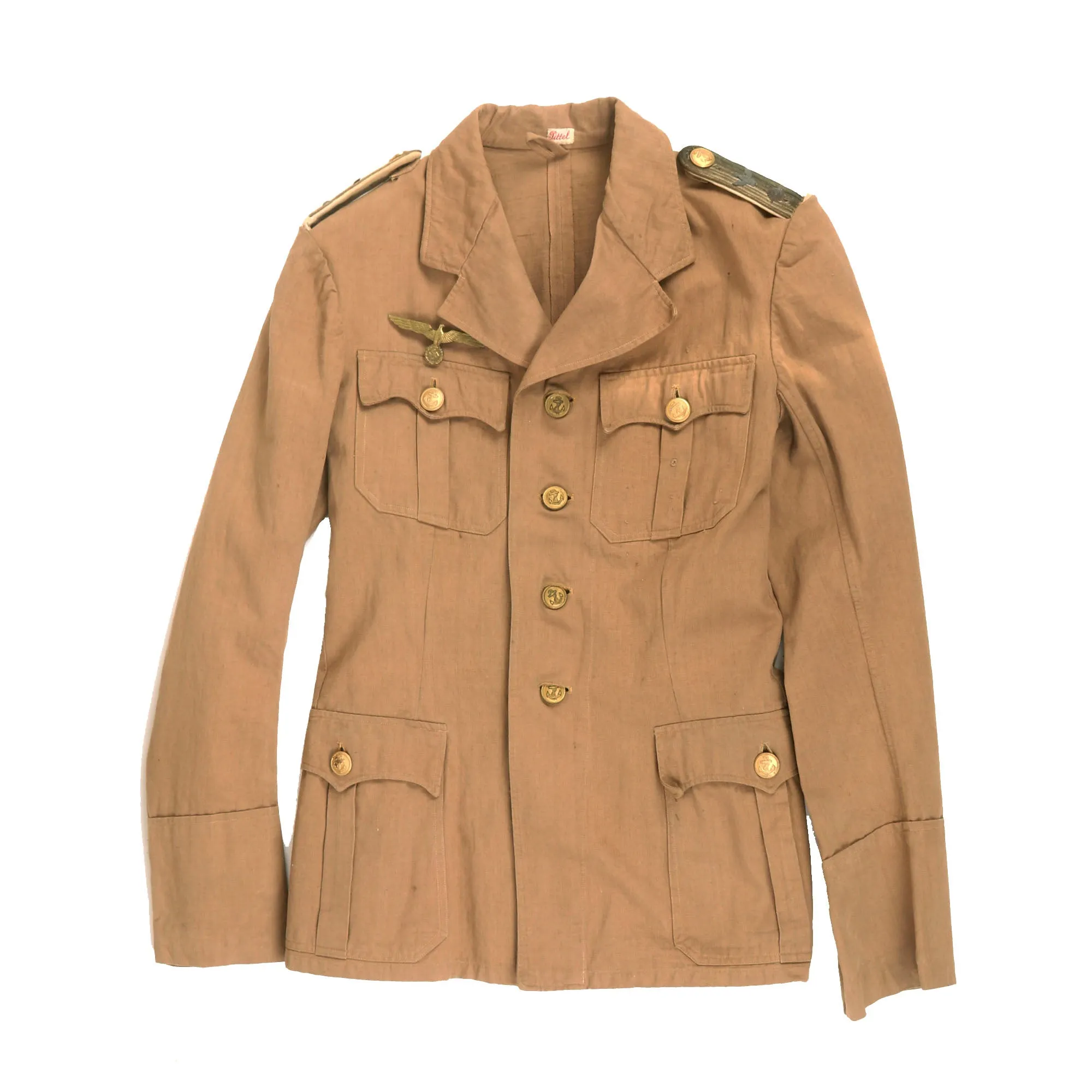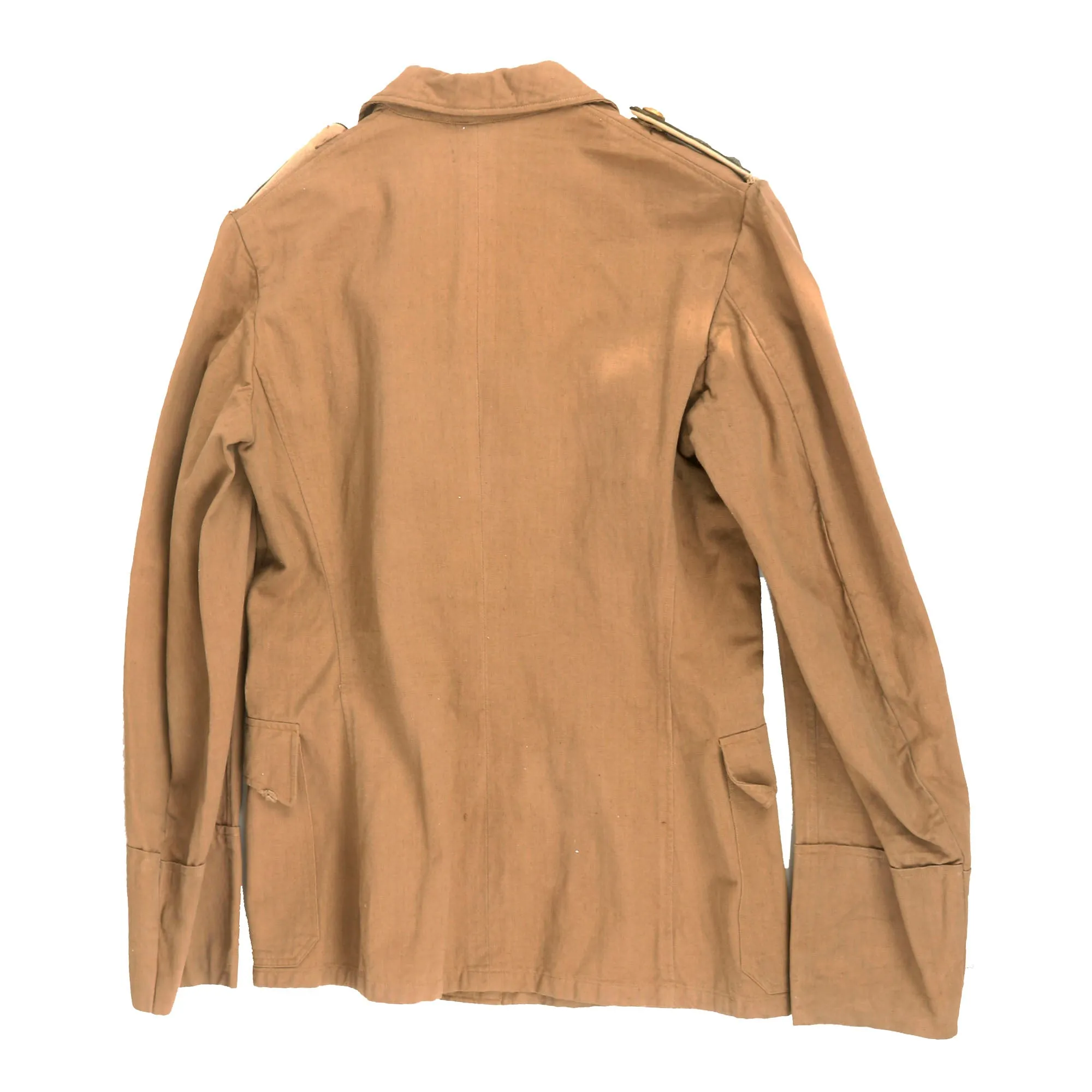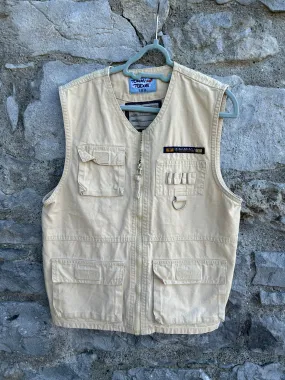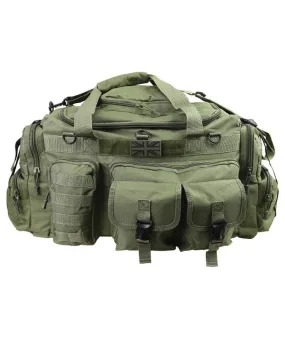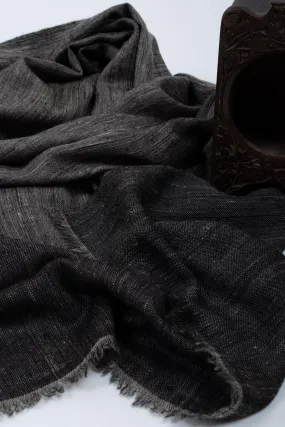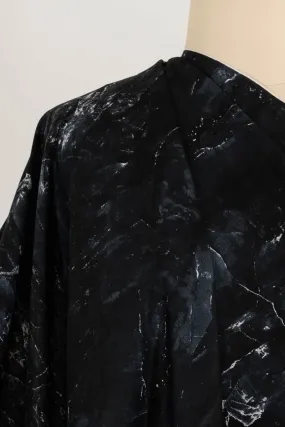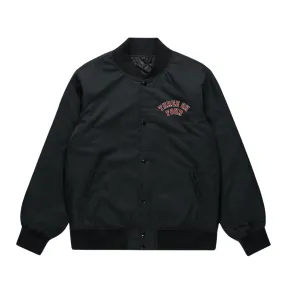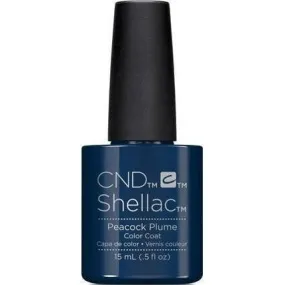Original Item: Only One Available. The Kriegsmarine was the navy of NSDAP Germany from 1935 to 1945. It superseded the Imperial German Navy of the German Empire (1871–1918) and the inter-war Reichsmarine (1919–1935) of the Weimar Republic. The Kriegsmarine was one of three official branches, along with the Heer and the Luftwaffe, of the Wehrmacht, the German armed forces from 1935 to 1945.
This is a lovely German WWII Kriegsmarine tan summer uniform tunic, which looks to have seen a fair amount of service during the war. There are no maker or size markings, probably due to laundering, but there does look to be an embroidered name tag in the collar, which reads Tittel or Pittel in red letters. It has rank insignia for an Oberleutnant zur See (Senior Lieutenant at See) Officer in the Küstenartillerie (Coastal Artillery), which does present some nice research potential.
The tunic is fabricated from tan cotton, and features it a standard fold down collar with lapels. There are four pockets on the front with scalloped flaps, one on each breast and larger ones at the waist on both sides. Each is designed with a decorative pleat and gilt Kriegsmarine buttons, each of which is maker marked and are held in place by clips on the inside of the pocket embedded in the pleat. The front of the jacket has a vertical row of four Kriegsmarine gilt buttons, also maker marked held in place by clips on the underside and visible on the inside of the tunic under a flap, which does not have any markings present. The right breast above the pocket is enriched with a Summer Kriegsmarine Metal breast eagle insignia pin held in place via two vertically-aligned vertical loops in tan threading for the pin, with a horizontal loop below for the hook on the bottom. There are some
The officers Schulterstücken (Shoulder boards) of this tunic are constructed with two rows of fine silver flatware "Russia Braid" double piping and have the correct white backing for the Kriegsmarine summer uniforms. They are the type that slides through a slot in the shoulder seam, and is held in place by a wider piece on the end, with the other end attached to the button on the uniform. There is a single rank "pips, indicating a Oberleutnant zur See, a rank equivalent to a U.S. Navy Lieutenant (Junior Grade). On each there also the "Winged Bomb" device for the Marine-Artillerie (Naval Artillery), also called the Küstenartillerie (Coastal Artillery). The shoulder straps are in very good condition, though they do have oxidation on the Russia-braid, and the extended end pieces on both have had the stiffeners crack, so they can pull through. There is also one of the "Wings" missing on the right side coastal artillery device.
Overall condition shows light to moderate use during the war, with some stitch pulling in areas, particularly around the slots for the shoulder insignia. There are some small stains, as well as some dirt and soiling from age and storage.
A fantastic German WWII Kriegsmarine Officers Tan Summer Tunic, ready to dress up with some awards and add to your collection.
Approximate Measurements:-
Collar to shoulder: 9.5"
Shoulder to sleeve: 25”
Shoulder to shoulder: 15”
Chest width: 18”
Waist width: 16.5"
Hip width: 18.5”
Front length: 29"
WWII Kriegsmarine
In violation of the Treaty of Versailles, the Kriegsmarine grew rapidly during German naval rearmament in the 1930s. The 1919 treaty had limited the size of the German navy and prohibited the building of submarines
Kriegsmarine ships were deployed to the waters around Spain during the Spanish Civil War (1936–1939) under the guise of enforcing non-intervention, but in reality supported the Nationalists against the Spanish Republicans.
In January 1939, Plan Z, a massive ship-building program, was ordered, calling for surface naval parity with the British Royal Navy by 1944. When World War II broke out in September 1939, Plan Z was shelved in favour of a crash building program for submarines (U-boats) instead of capital surface warships, and land and air forces were given priority of strategic resources.
The Commander-in-Chief of the Kriegsmarine (as for all branches of armed forces during the period of absolute NSDAP power) was AH, who exercised his authority through the Oberkommando der Marine ("High Command of the Navy").
The Kriegsmarine's most significant ships were the U-boats, most of which were constructed after Plan Z was abandoned at the beginning of World War II. Wolfpacks were rapidly assembled groups of submarines which attacked British convoys during the first half of the Battle of the Atlantic but this tactic was largely abandoned by May 1943 when U-boat losses mounted. Along with the U-boats, surface commerce raiders (including auxiliary cruisers) were used to disrupt Allied shipping in the early years of the war, the most famous of these being the heavy cruisers Admiral Graf Spee and Admiral Scheer and the battleship Bismarck. However, the adoption of convoy escorts, especially in the Atlantic, greatly reduced the effectiveness of surface commerce raiders against convoys.
Following the end of World War II in 1945, the Kriegsmarine's remaining ships were divided up among the Allied powers and were used for various purposes including minesweeping. Some were loaded with superfluous chemical weapons and scuttled.




